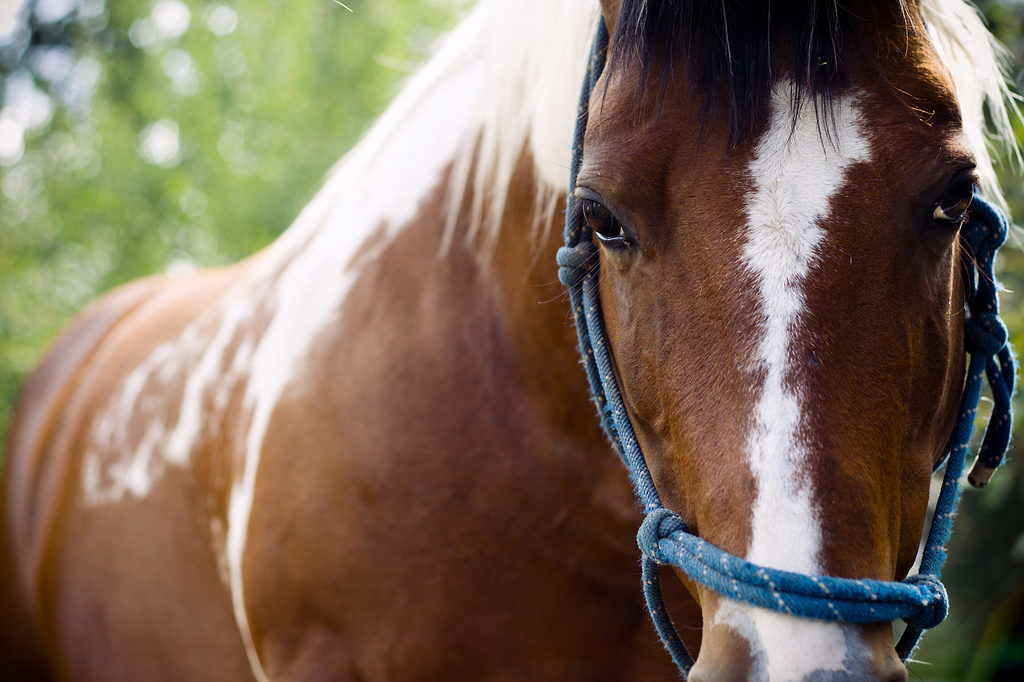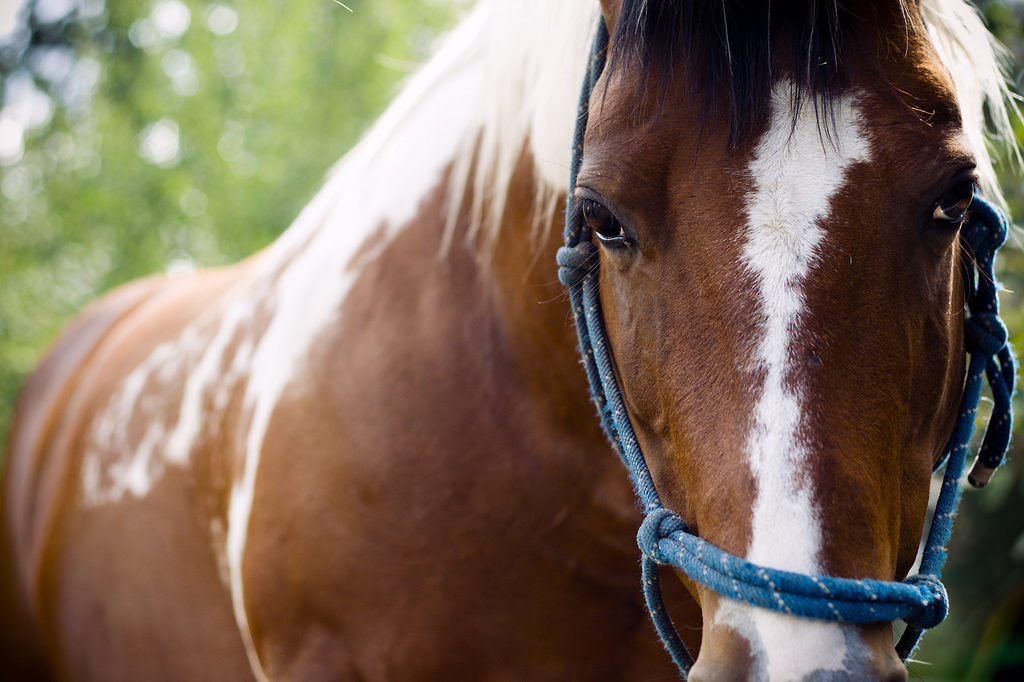
Sometimes you see a horse, and there’s just something about his face that really jumps out at you. Maybe it’s the splash of white in the middle of his forehead that kind of looks like heart, or the colored fur at the top of his head that makes him look like just his ears were dipped in paint. With only a few exceptions, markings are almost always white. Below we’re going to discuss some of the common facial markings of a horse, and what their identifying features are.
Star
A star is a white spot on a horse’s forehead between their eyes. It can be both very pronounced or just a small spot, and can be either symmetrical or splotchy. Some stars can even spread so far down the forehead that they may connect with other facial markings. While this symbol may continue long into adulthood, for many equines the symbol fades while still in the youth.
Blaze
Possibly the most common face marking, a blaze is a wide white stripe down the middle of a horse’s face that starts at the forehead and ends at the end of the nose or mouth. It usually covers the entire bridge of the nose, and can be either symmetrical or slightly crooked.
Snip
A snip is a small white facial marking that can be found on a horse’s nose between their nostrils. It can vary in shape and size, and is often found with other markings. Some people feel that a snip should be limited to between the nostrils, while others believe it can extend over the entire nose.
Strip/Stripe/Race
This marking is similar to a blaze, but is characterized by being significantly thinner and is usually expected to be straighter than a blaze. The strip/stripe/race can be either connected to a star or snip, or can remain separate from other markings.
Bald
Found mostly on paints and pintos (though it can be found on other breeds) bald markings extend from the nose to past the eyes and down to the cheekbones. It’s not uncommon to see at least one eye be a blue color, and the large white areas may be more prone to sunburn.
Ermine
Perhaps not as common as some of the others, and ermine marking is a splotch of black in an otherwise white marking, such as a blaze or a star. They can be of any size or shape, and can also be found on the leg markings of a horse.
Apron
An apron face is similar to a bald face in that it is a very large white pigmented area, but this stays on one half of the face and doesn’t usually extend past the eyes. It tends to cover the entire muzzle of the horse and can spread downward to their throat latch and jaw.
Medicine Hat
Also known as a Moroccan pattern, the Medicine Hat marking is usually found on pintos. It’s considered a backwards marking where the whole horse’s face is white, and only the ears and top of the head is dark colored fur.
Faint
A faint is similar to a star in that it is located on the forehead in between the eyes, but a faint is much less pronounced. These markings are usually only a few hairs and are almost unnoticeable. Some people don’t even observe them as they can easily be covered by a horse’s forelocks.
***
Like a snowflake, no two horse facial markings are alike, and they’re often used to identify one equine from another if they are of similar sizes and colors. Knowing the identifying features of different types of horse markings is especially important if you’re trying to fill out registration papers, or if your horse needs to take some kind of test for competitions. To help keep your horse’s fur and mane as beautiful in real life as it is in your mind, check out grooming products from brands like Tough-1 and HorZe.

